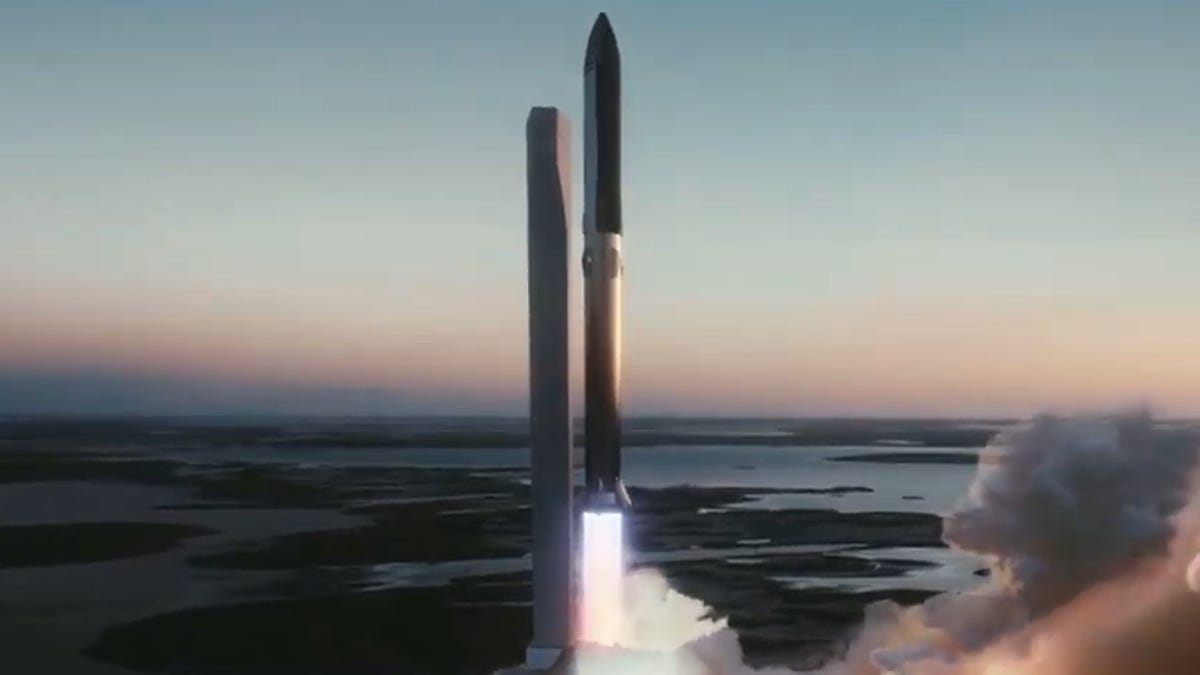SpaceX plans to send Starship to Hawaii via space
Elon Musk's early designs have flown only about as high as a commercial flight so far, but plans are in place to go much further.

A Starship launch might one day look like this.
Starship's first trip beyond Texas will take Elon Musk's Mars rocket prototype to Hawaii via orbit.
That's the plan revealed in a new SpaceX filing with the Federal Communications Commission on Thursday. SpaceX applied to the FCC for a license authorizing the radio communications for the next-generation spacecraft's first visit to actual space.
An attachment to the application lays out the details of the flight:
"The Starship Orbital test flight will originate from Starbase, TX. The Booster stage will separate approximately 170 seconds into flight. The Booster will then perform a partial return and land in the Gulf of Mexico approximately 20 miles from the shore. The Orbital Starship will continue on flying between the Florida Straits. It will achieve orbit until performing a powered, targeted landing approximately 100km (~62 miles) off the northwest coast of Kauai in a soft ocean landing."
So an upcoming Starship prototype, paired with a Super Heavy booster, will blast off from the SpaceX development site in Boca Chica, Texas. Super Heavy would then separate and land, perhaps on a ship, off shore while Starship continues on to orbit, flying east all the way to Hawaii for a splashdown in the Pacific. The entire flight, from liftoff to splashdown, is expected to last 90 minutes.
The plan is reminiscent of something Elon Musk promised when first introducing his aim to build Starship -- super-fast point-to-point flights between destinations on Earth via orbital flights.
This is interesting, as we've yet to see a Super Heavy fly, and we haven't seen Starship fly higher than about 6.2 miles (10 kilometers). So there's likely still plenty of work to do before we see this demonstration leave the ground. Musk has previously said it could happen as soon as July.
SpaceX didn't immediately respond to a request for comment.
Follow CNET's 2021 Space Calendar to stay up to date with all the latest space news this year. You can even add it to your own Google Calendar.

